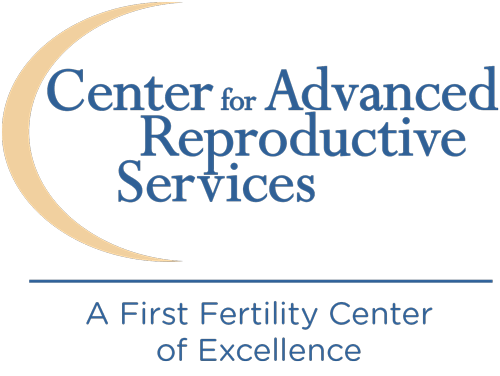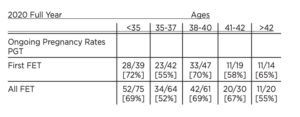By Claudio Benadiva, MD, HCLD
Of the 150,000 babies born with a birth defect each year, chromosomal and/or genetic anomalies are either solely or partially to blame, according to the March of Dimes. Preimplanatation Genetic Testing (PGT) is a procedure that screens embryos for genetic abnormalities before they are transferred into the uterus. PGT can be used for fertile couples that have been identified as high-risk for passing on a genetic disease, as well as for infertile couples.
The Center for Advanced Reproductive Services at UConn was the first program in Connecticut to offer PGT as an alternative to prenatal testing for those at risk of transmitting a genetic disorder. PGT is most indicated for the following patients:
1. Genetic disorders. PGT-M can be performed to help couples aware of genetic disorders through family history or based on carrier testing. In genetic disorders where the genetic mutation is known, such as Cystic Fibrosis or Tay-Sachs, the actual genes of the embryo are examined for presence of the condition and only the normal embryos are transferred back to the mother.
2. Advanced maternal age. Chromosomal abnormalities due to advancing maternal age are more likely to occur in women over the age of 35. These abnormalities can lead to problems such as Down Syndrome or early miscarriage. PGT-A can determine the number of chromosomes and determine which embryos are the most likely to result in a healthy pregnancy.
3. Recurrent miscarriages. Aneuploidy or structural chromosome rearrangements (translocations) can lead to recurrent miscarriages. PGT-A and PGT-SR can determine which embryos are most likely to result in a healthy pregnancy.
In 2020, approximately 50% of CARS IVF cycles included PGT for aneuploidy screening (PGT-A). PGT consists of the biopsy of embryos at the blastocyst stage and chromosomal analysis using next generation sequencing (NGS) on the biopsied cells. After the biopsy procedure, the embryos are frozen and stored in our liquid nitrogen tanks. Once the PGT results are received, the euploid embryos are thawed and utilized in a frozen embryo (FET) cycle or remain frozen and stored for future use.
The chart below shows ongoing pregnancy rates for CARS PGT patients after their first FET cycle and then for all FET cycles. As the age of the patient increases, so too do the benefits of PGT-A. Specifically, in patients 38 and older, we see an approximate 30% increase in ongoing pregnancy rates per transfer when PGT is used compared to cycles in which PGT-A is not used.
Testing: Accuracy and Process
The accuracy of PGT depends upon the disease being tested for, but overall it is able to diagnose genetic defects with a very high accuracy. The advantage of PGT is that it reveals these genetic defects before pregnancy, as opposed to amniocentesis and CVS which show these defects during pregnancy.
The PGT process begins with the same steps taken during preparation for a routine IVF cycle. Once the embryos have developed, one or more cells are taken from each embryo for analysis. At The Center, we work with dedicated embryologists trained specifically in the most recent biopsy techniques to help insure the highest quality of results.


